Curtis Fentress, founder and principal in charge of design at Fentress Architects, explains how architecture can form an enduring connection between the building, people, and the environment.
Architecture is an important form of connection to people, culture, geography, and the true spirit of a place. At Fentress Architects, we believe a building’s design should create an enduring link between people and the natural environment—an intrinsic connection that uplifts the human spirit while creating a positive impact on our communities and environment. That is why we prefer to practice inherently sustainable design, an approach that produces architecture to support the health and well-being of both the environment and humans for its entire life cycle.
In order to bring this concept of inherently sustainable design to life, let’s explore a few case studies where sustainability meets innovative design.
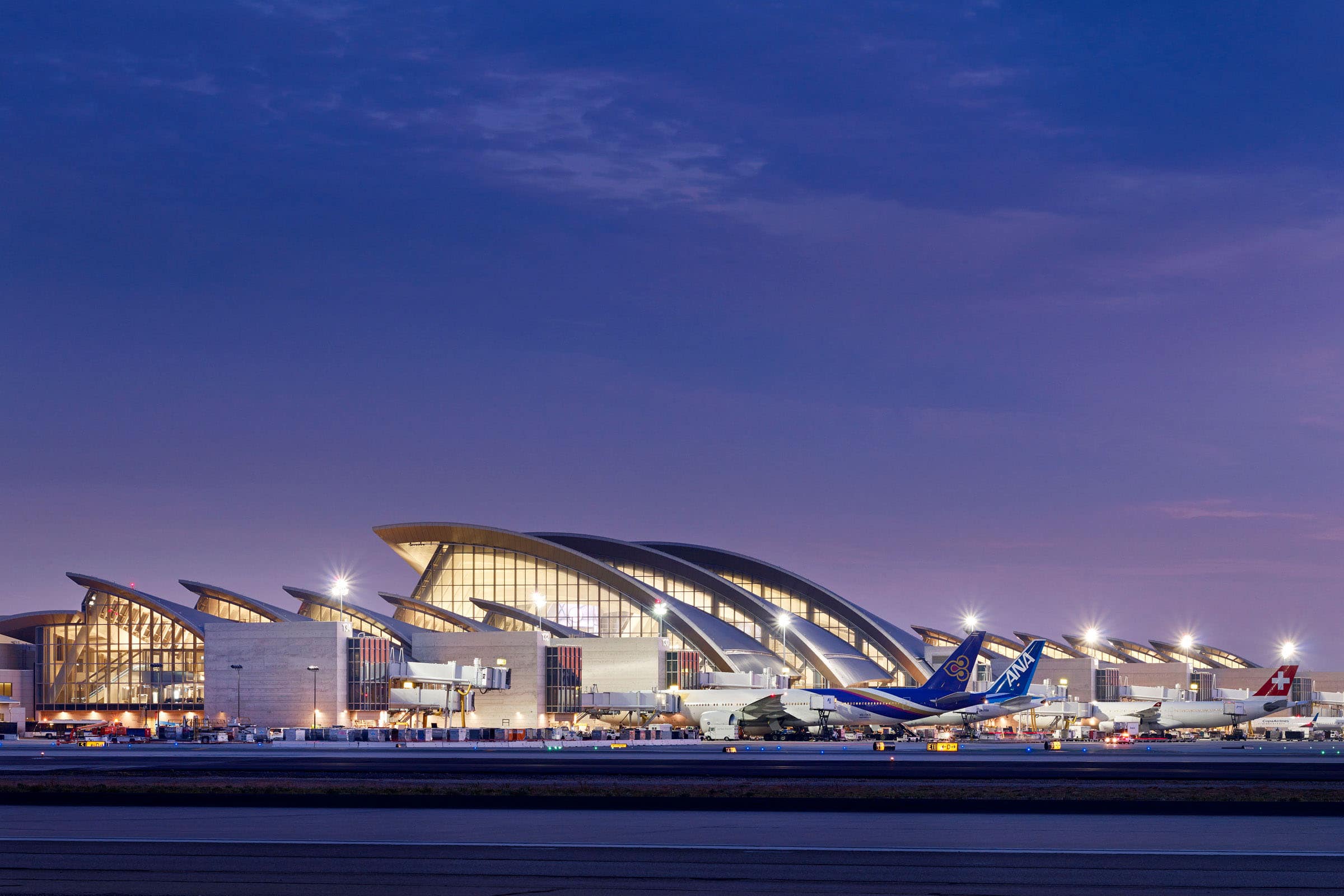
Fentress Architects’ design for the Tom Bradley International Terminal at LAX resulted in one of the largest LEED Gold terminals in the world. Photo by Nick Merrick
Case Study: How Can You Create a Human-Centered Airport Experience?
While some building types may readily lend themselves to an inherently sustainable design approach, it can be applied to all, including airports. For decades, these megastructures have been thought of as solely harmful to the environment. Beyond the greenhouse gas emissions and noise pollution, the buildings themselves were historically fraught with resource and operational inefficiencies. The good news is they don’t need to be that way. In fact, as our own designs illustrate, airports are embracing inherently sustainable design.
After 25 years without major upgrades, Los Angeles International Airport (LAX) was outdated and unable to serve its functional demands. In 2009 a $14 billion capital improvement program was launched to redevelop the airport. Representing the centerpiece of this airport improvement program, we embraced the challenge of transforming LAX’s cramped, windowless “passenger processor” facility into a world-class, people-centered experience.
As a highly visible public building, the project required input from dozens of stakeholders and the public in order to meet the client’s and community’s needs. The design concept evolved out of a year-long visioning process that was guided by the following goals: signature architecture that reflects LA’s unique character, LEED Gold certification, improved passenger experience, long-range functionality, and compatibility with next generation aircraft, like the Airbus A380.
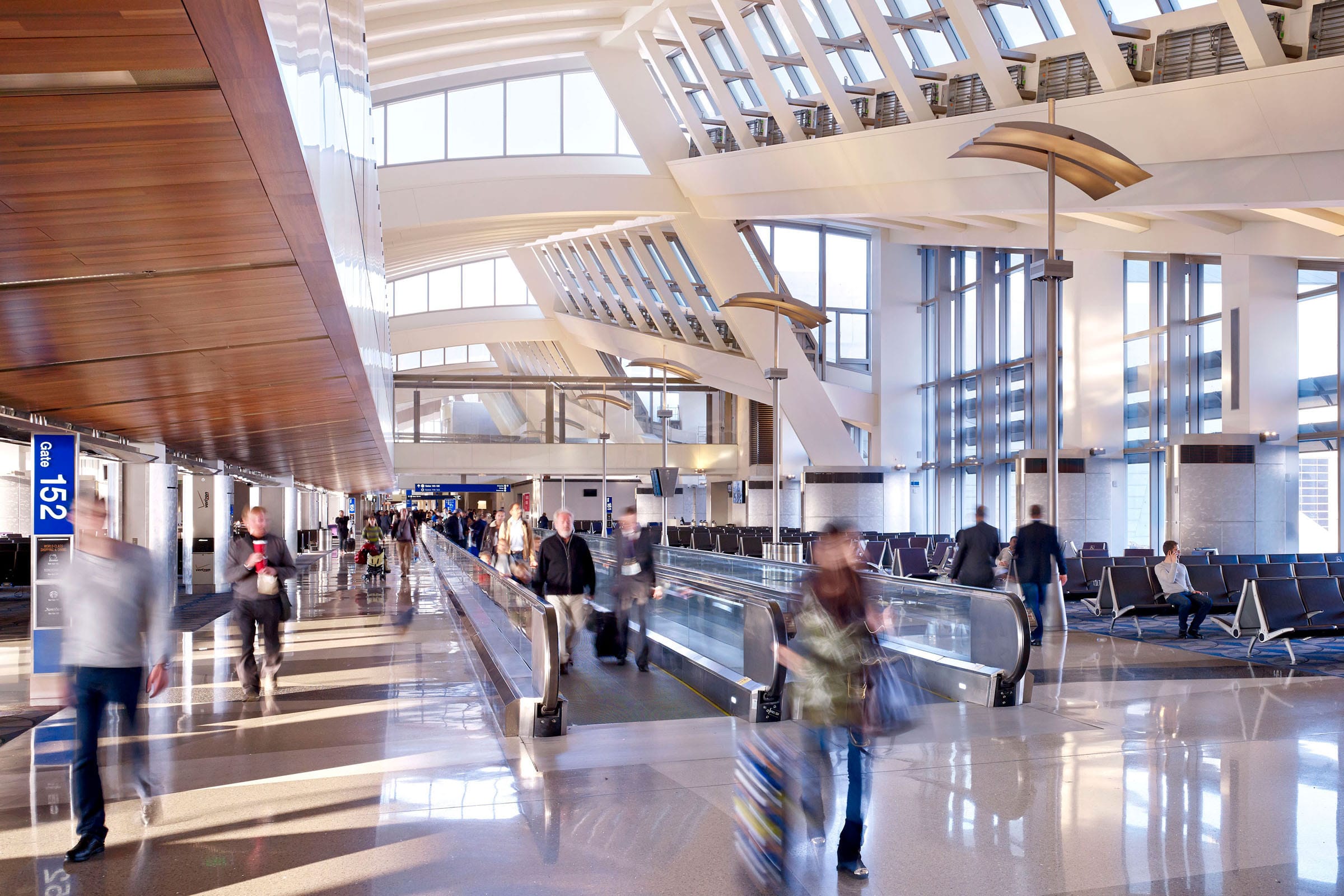
Inspired by the Pacific Ocean, the Tom Bradley International Terminal’s site-responsive roofline optimizes building performance by reducing solar glare and heat from the ocean from the west and bathes the terminal in natural light from the northeast. Photo by Nick Merrick
Optimizing Daylight
Of those quintessential characteristics that define a place, it is the quality of light that is among the most distinctive. Daylighting not only creates a sustainable building solution by reducing energy consumption, but it also enhances human comfort. For the Tom Bradley International Terminal (TBIT), we capitalized on Southern California’s abundant daylight by deploying multiple daylighting strategies that are expressed in the wave-like roof forms.
The site-responsive, stainless steel roof optimizes building performance by reducing solar glare and heat from the ocean from the West and bathes the terminal in natural light from the Northeast. To improve wayfinding, the roof form stretches over column-free structures to create expansive interior spaces that form a rationalized programmatic layout of passenger circulation and amenities. Expansive glass curtain walls offer views of the airfield and the nearby Santa Monica Mountains while clerestory windows fill the 150,000-square-foot Great Hall with sunlight.
As an infill project, the overall configuration and orientation of TBIT were dictated by existing buildings and runway alignments. Nonetheless, by the modulation of each overlapping roof form, our designers created both north-facing clerestories and deep overhangs that protect the southern and western exposures. Detailed daylighting analyses also identified areas and times in the building that required glare protection while allowing us to strategically place seating and retail configurations to leverage day-lit shaded zones.
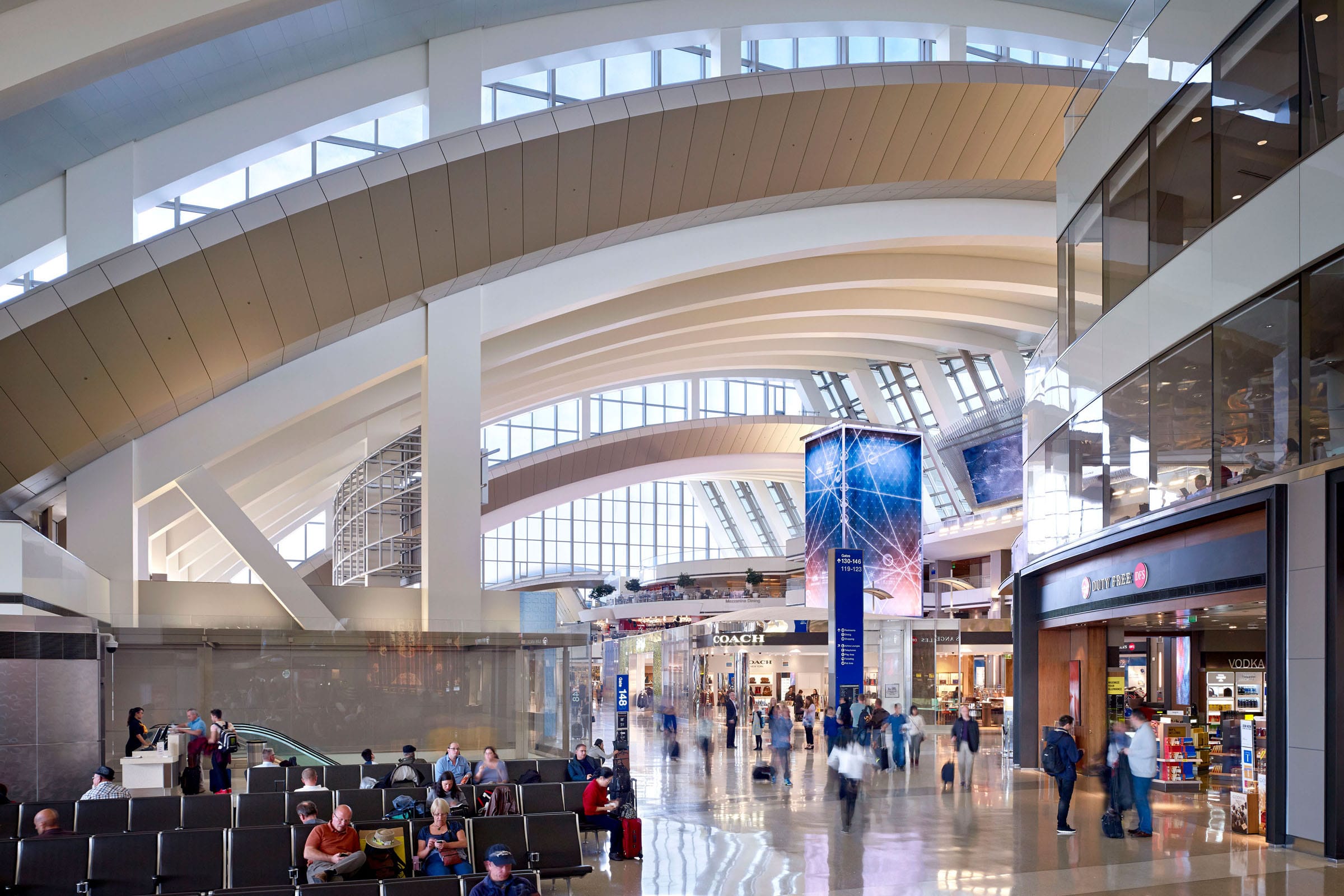
Fentress Architects designed stainless steel roof forms that stretch over column-free structures to create dramatic, expansive interior spaces that form a rationalized programmatic layout of passenger circulation and amenities in order to improve wayfinding and level of service. Photo by Nick Merrick
Improving Building Performance
To further optimize building performance, we undertook several environmental measures including:
- Using a high-performance thermal envelope
- Adopting an early procurement program for recycled materials and specification of non- or low-emitting materials
- Recycling or salvaging more than 75% of construction and demolition waste
- Applying drought tolerant landscape planting
- Installing energy-efficient lighting fixtures and controls with occupancy sensors to reduce lighting costs and save energy during off-peak hours
- Incorporating HVAC controls that reset temperatures to maximum efficiency without sacrificing occupant comfort
- Designing interior finishes with recycled materials and using low-emitting paints, adhesives, carpets and sealants in the interior
The result is an airport terminal that is a gateway to LA and a sustainable amenity to the community.

The LEED Platinum Nature Research Center re-imagines the very idea of the museum as a building type by creating an interactive space filled with natural light and opportunities for hands- on learning. Photo by Jason A. Knowles
Case Study: How Can Architecture Bring People Together?
Sustainable design requires more than a check-box approach in ensuring the design meets necessary benchmarks. To create inherently sustainable designs that encourage people to think more deeply about the environment, architects must form a bond between individuals, the community, and the building.
For the LEED Platinum Green Square Complex in Raleigh, North Carolina we worked closely with O’Brien Atkins Associates to bring scientific research, environmental efforts, and the community together by using sustainability and science as design inspiration. The complex transformed a pair of bleak lots in the heart of downtown Raleigh into a multi-use sustainable development that brings together the existing Museum of Natural Sciences with a new Nature Research Center and a headquarters for the North Carolina Department of Environment and Natural Resources (NC DENR), while also adding public plazas and landscaped open spaces.
To create a design that reflects NC DENR’s mission to provide science-based environmental stewardship to the public, we harmonized their values into a forward-thinking, technology driven and environmentally conscious design through state-of-the-art media, exhibits, and laboratories that demonstrate the process of scientific discovery.
A Model for Sustainability
Since its completion in 2012 the Green Square Complex has served as a model of environmentally efficient design. Our team implemented significant sustainability measures, including extensive energy-efficient and water-efficiency techniques, to optimize the use of natural resources while exercising environmental responsibility.
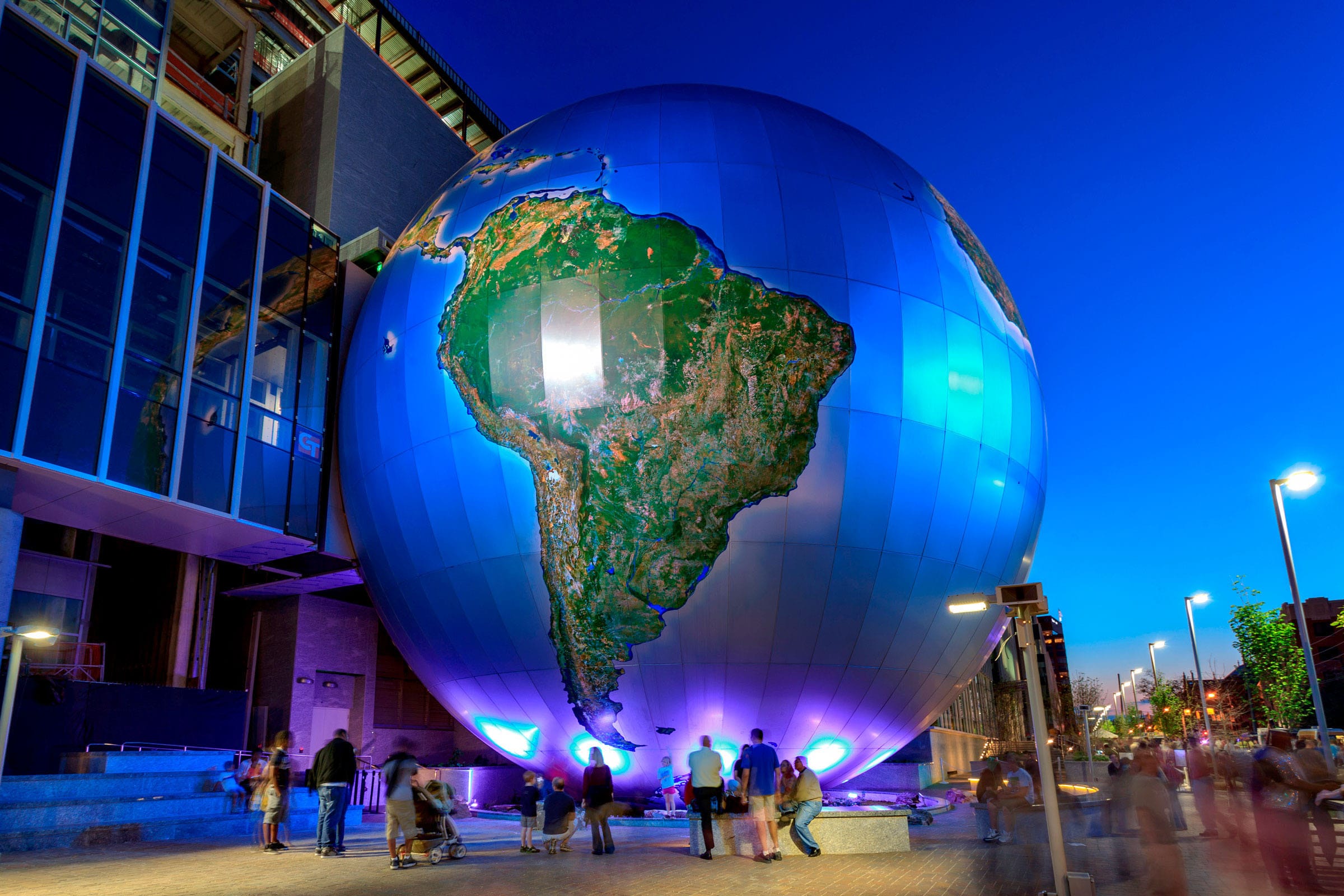
The “Daily Planet,” a key feature of the Green Square Complex in Raleigh, North Carolina, has become a popular meeting place for staff and visitors alike. Photo by Matt Robinson
Designing for the Community
Designs that are inherently sustainable produce architecture that provides a community amenity. The Green Square Complex is situated in a neighborhood known as a hub to North Carolina’s government agencies. In order to create a public space where the community could gather, we intentionally added public plazas and landscaped open spaces. A key feature is the “Daily Planet,” a four-story spherical projection environment and auditorium that breaks free of the building envelope and has become a popular meeting place.
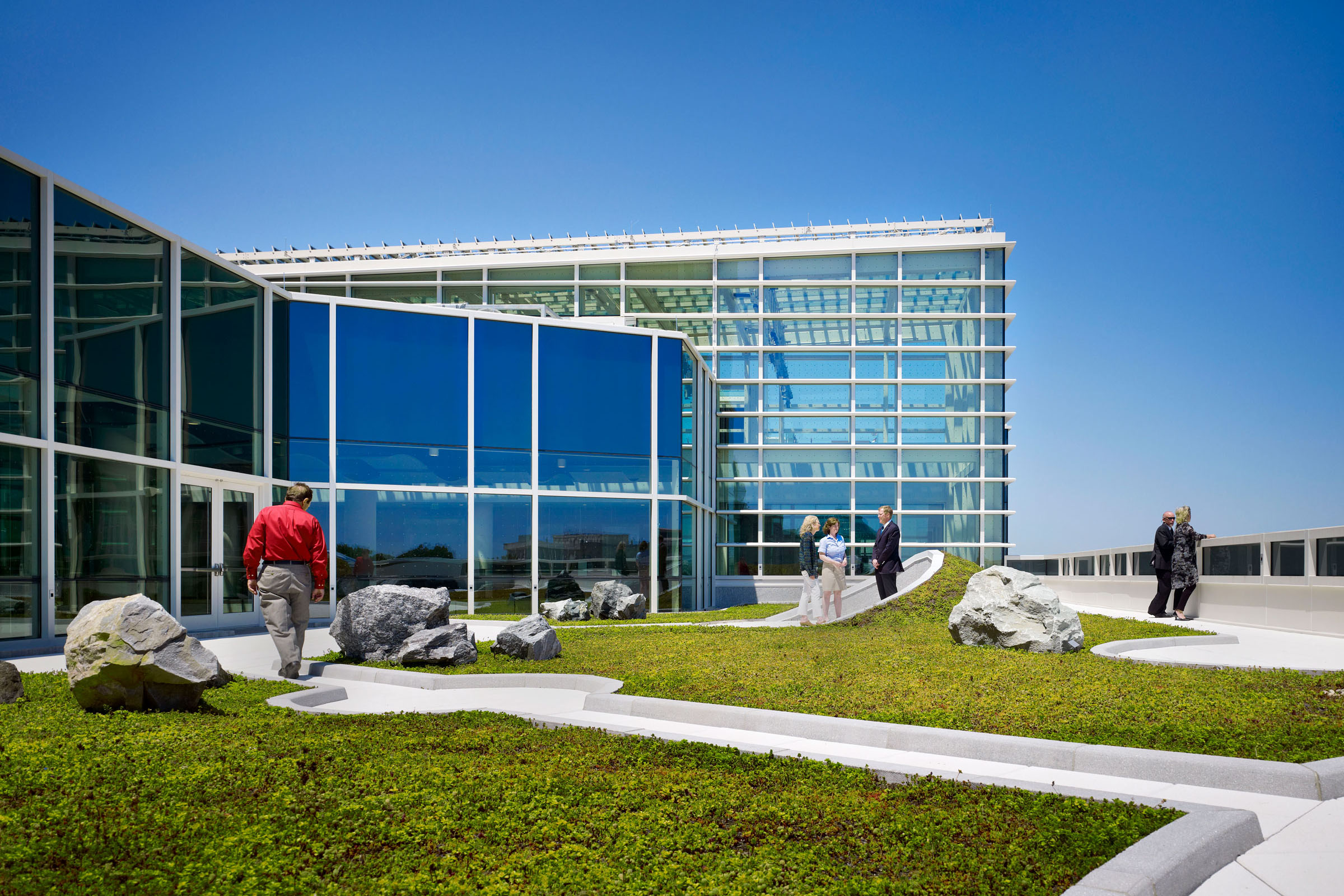
The LEED Platinum Green Square Complex features a 10,000-square-foot green roof and maximizes daylighting with transparent interior and exterior walls. Photo by Nick Merrick
Optimizing Site Potential
The location of a building controls a variety of environmental factors, necessitating the need for architects to implement creative strategies to ensure the design optimizes the site’s full potential. To enhance sustainability, we installed a pervious pavement to reduce stormwater runoff.
Green roofs on both the Nature Research Center and DENR Headquarters provide multiple environmental benefits, including improving stormwater runoff and retention, creation of natural habitats in an urban environments, reduction of heat island effect, filtration of pollutants out of rain water, and building insulation.
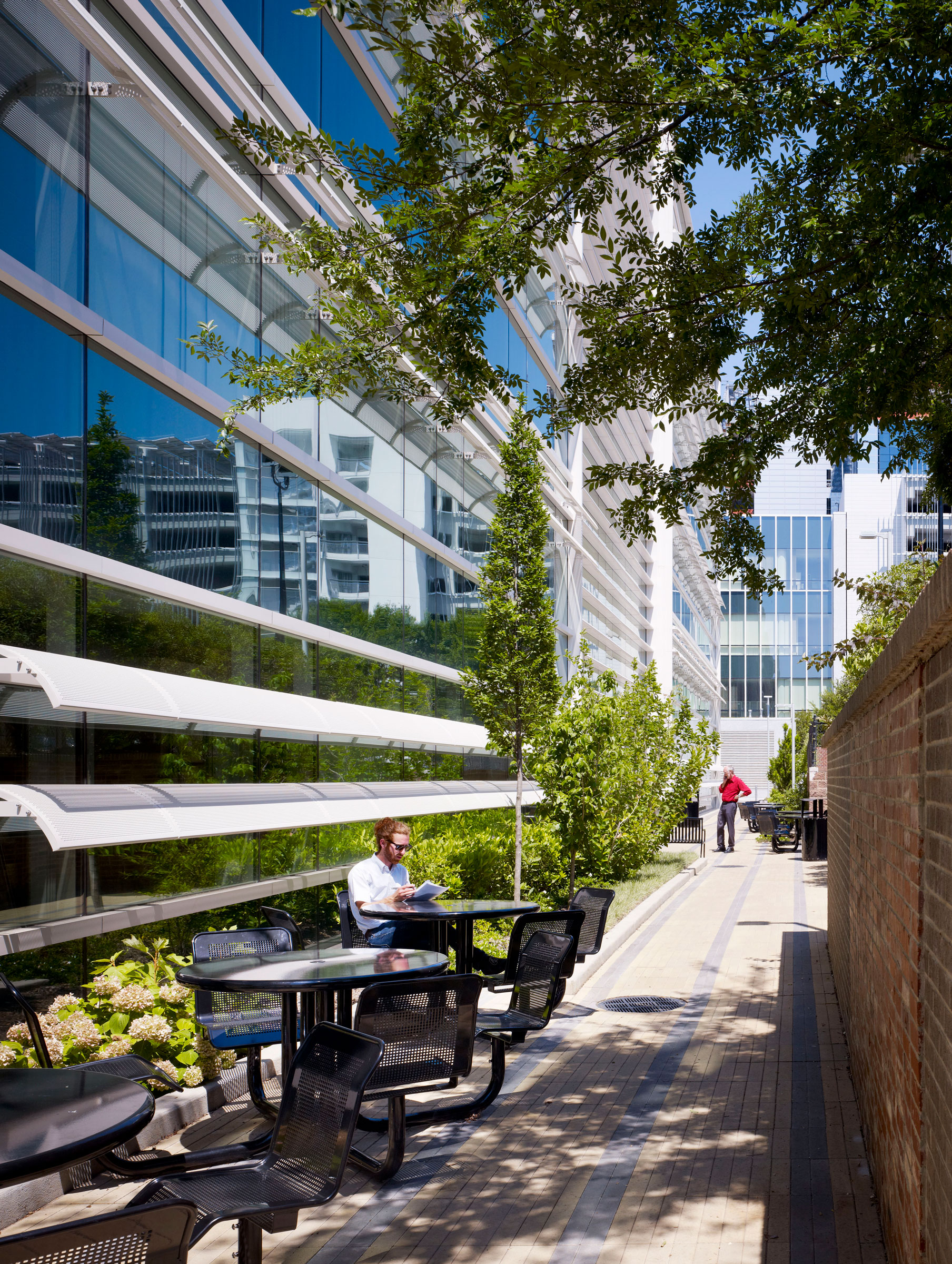
Sunshades on the LEED Platinum NC DENR headquarters block harsh sun during the summer and penetrate light during the winter. Photo by Nick Merrick
Maximizing Architecture
Multiple daylighting strategies are implemented throughout the DENR headquarters: light shelves, full glass atria, light tubes, prismatic louvers, and photo dimming around the building perimeter to maximize daylighting. Meanwhile, photovoltaic louvers shade the Nature Research Center’s atrium. Highly efficient Low-E glass further enhances energy efficiency and optimizes daylighting. Together these strategies serve to significantly reduce energy consumption.
Additionally, salvaged materials from both the existing and demolished buildings were reused. For example, marble salvaged from the existing building now serves as countertops for the DENR reception desk.
The Green Square Complex is a showcase for cutting-edge sustainability technology that has been warmly embraced by the community-at-large.
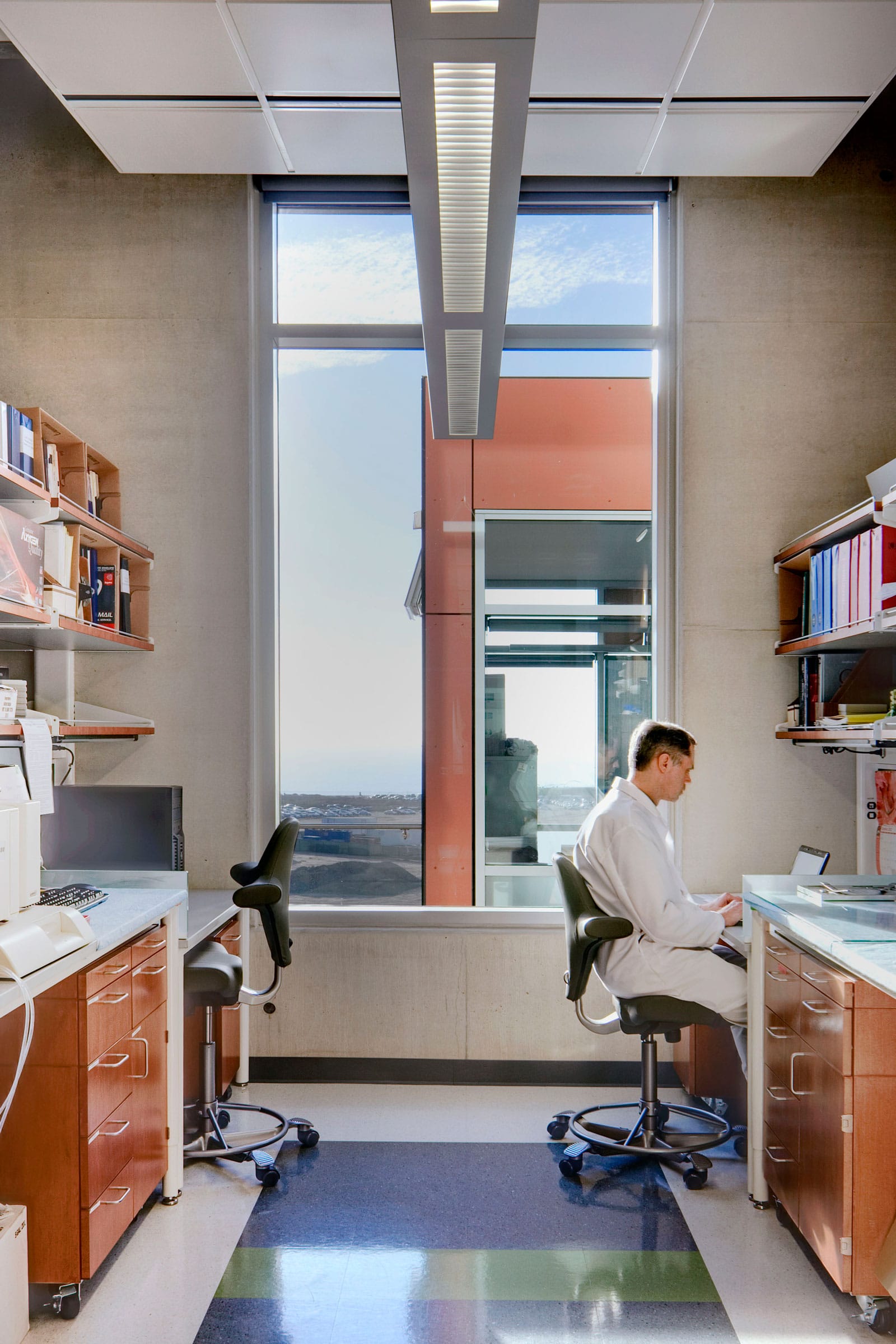
The Sanford Consortium of Regenerative Medicine (SCRM) is certified LEED Gold, recognizing a new standard in sustainability for a research building. Photo by Steve Keating
Case Study: How to Advance Sustainability in Laboratory Design
Laboratories tend to be high energy consumers. On college campuses, labs use up to 10 times the amount of energy consumed by traditional classroom space. Although enhancing their sustainability is a vital step in developing an environmentally conscious built environment, it’s also challenging due to stringent codes and safety concerns.
In order to shift this paradigm, the team at Fentress implemented a context-driven design approach for the Sanford Consortium for Regenerative Medicine (SCRM) that aids in advancing scientific research while simultaneously minimizing the building’s impact on the environment. SCRM, which achieved LEED Gold, promotes innovation and discovery as it sets a new standard for sustainability in a research building.

The Fentress-designed research center thoughtfully opens spaces up to views and ocean breezes, ensuring the design takes advantage of the site and local climate to lower utility costs and improve the quality of workspaces. Photo by Steve Keating
Leveraging the Natural Environment
As with every Fentress building, our design for SCRM sought inspiration from the site’s natural environment. In this case, we leveraged La Jolla’s temperate climate and the site’s Pacific Ocean view to drive sustainability.
To maximize daylighting in the exterior office pods, we laterally shifted the labs to allow sunlight to reach interior work areas. Shading devices, combined with operable windows, displacement ventilation, and chilled beams, enhance user comfort and serve to improve energy efficiency, estimated to be 21% better than standard (ASHRAE 90.1-2004). By cantilevering the office pods off the building envelope, the design increases circulation and promotes outdoor access, allowing researchers to take advantage of the mild San Diego weather.
Spaces are thoughtfully opened to views and ocean breezes to ensure the design not only takes advantage of the site and local climate, but that it also lowers utility bills and improves the quality of workspace in a way that is a catalyst for behavior change. Collegiality and collaboration are fostered through inviting, strategically placed amenities that encourage interaction and physical activity.
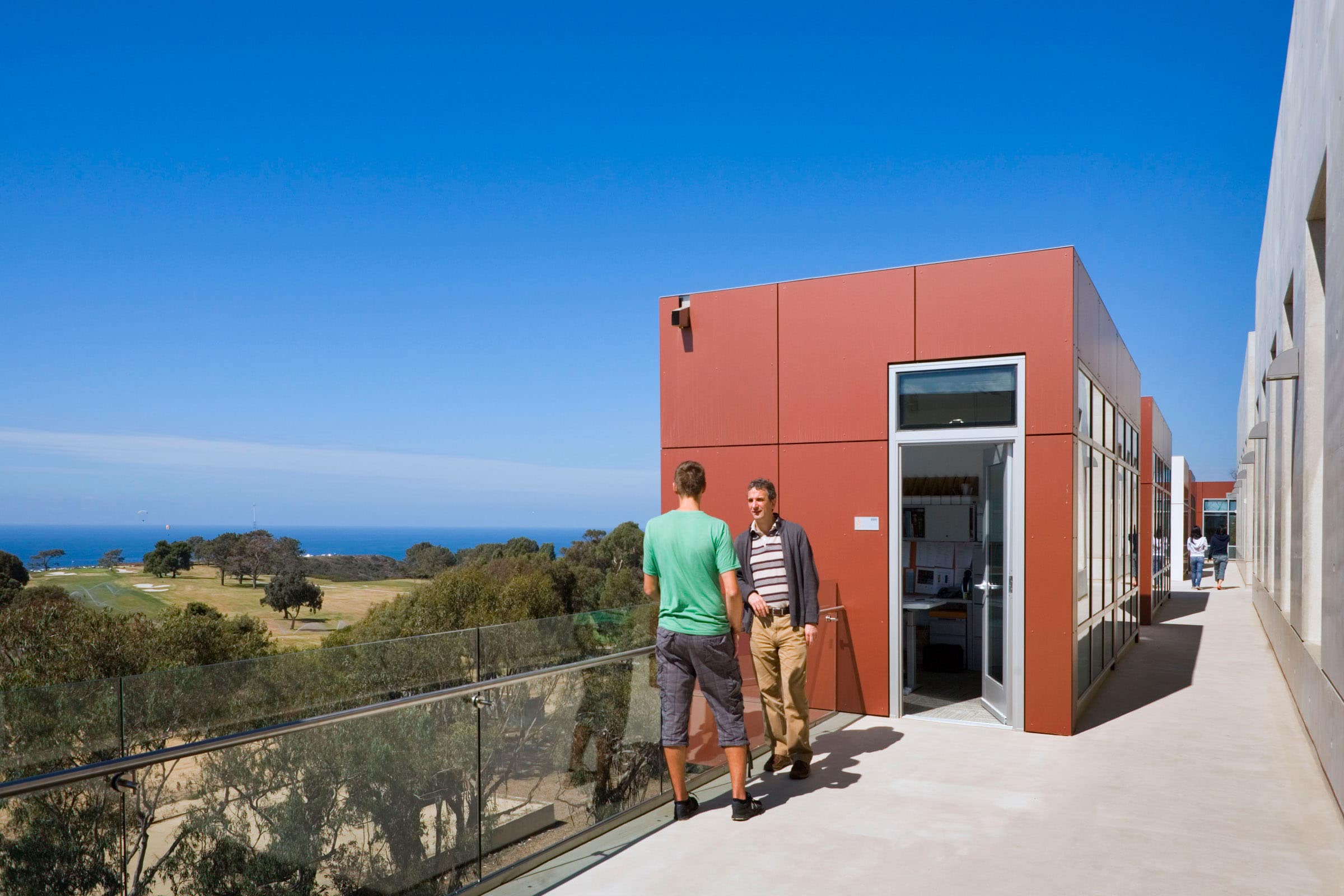
For the design of the Sanford Consortium of Regenerative Medicine, Fentress Architects cantilevered office pods off the building envelope, which allows researchers to take advantage of the mild San Diego weather while enhancing circulation and outdoor access. Photo by Steve Keating
Improving Rainwater Harvesting
The project’s rainwater collection system and landscape design feature recycled and salvaged materials. Water conservation strategies—low-flow plumbing fixtures; the use of gray water for plant irrigation, toilets, and urinals; and more—have improved the project’s water efficiency by 40% over baseline expectations.
As a result, SCRM recognizes a new standard in sustainability for a research building.
How to Design for Long-Term Commitment
As architects and designers we must look beyond trends and design styles when it comes to creating inherently sustainable architecture. Drawing inspiration from a building’s context and taking a holistic approach that embraces all stakeholders—from the client and its users to the community at large and the environment—we can create architecture that stands the test of time and gives back to the communities it serves well into the future.


